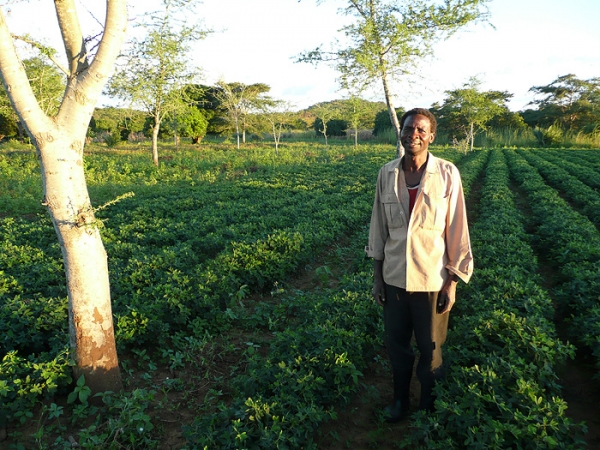Experts and farmers propose strategies for using agroforestry to restore degraded lands in Brazil

Agroforestry, the cultivation of trees on farmland in different combinations with crops and livestock, can play a strategic role in restoring protected areas in Brazil.
This was one of the key conclusions to come out of a recent workshop in Brazil that involved scientists, restoration experts, farmers and policymakers. The workshop participants together proposed new principles and best practices to restore privately owned protected areas, known as Permanent Preservation Areas and Legal Reserves.
Under the Brazilian Forest Code, a land-use law passed in 2012, smallholders are allowed to use agroforestry systems, with exotic species on up to 50% of the restoration area, to comply with mandatory restoration of riparian zones, steep hillsides, ridges and springs. Using agroforestry systems in this way may not only offset the costs of compliance with the Code, but also increase livelihood opportunities for farmers. However, the law is unclear about how this should be accomplished in practice if restoration is to couple ecological functions with social benefits. Even though the Forest Code is already in effect, Brazil’s 27 states have yet to regulate how smallholders will be able to use their restored lands, leaving open some highly contentious questions, such as what exotic species and management practices would be allowed in those restored lands.
Due to these uncertainties, farmers are reluctant to adopt agroforestry systems as a means for restoring these protected areas. Meanwhile, environmental enforcement and rural extension agencies tend to take a conservative stance that discourages farmers from playing a more active role in restoration processes.
ICRAF-Brazil and national partners, ISPN (Institute Society Population and Nature), Embrapa Cenargen (Embrapa Genetic Resources & Biotechnology, Brazilian Agricultural Research Corporation) and IUCN (International Union for the Conservation of Nature), held a 3-day workshop in Brasilia, Brazil, Conservation through Agroforestry: paths for restoration among family farmers. The workshop focused on strategies for reconciling conservation and restoration with agroforestry-based production systems to guide best practices on the ground and provide technical inputs for regulating the new Forest Code and improving other policies.
The seminar brought together several key experts in restoration and agroforestry systems, innovative farmers, practitioners, NGOs and policymakers from federal and state agencies. The group recognized the importance of agroforestry as a key strategy for restoring degraded areas to comply with the forest code and reconciling conservation with food production, which is a major achievement considering the conservation-oriented approach traditionally adopted for Permanent Preservation Areas in Brazil.
Participants also developed a common understanding of the key concepts underpinning the use of agroforestry systems for restoration, underscoring the importance of the human component in the process, such as basic management practices like pruning. Working groups took first steps towards designing agroforestry interventions and solutions, proposed principles and criteria to guide interventions, and key species and best management practices geared to specific contexts. The groups and plenary also began tackling the thorny issues of exotic species and best management practices considered most appropriate in these circumstances.
The participants also produced an Open Letter that will be sent to key Brazilian policy-making agencies. The Open Letter states that agroforestry systems are strategic for reconciling conservation with livelihoods and that research, education and extension services need to be more geared towards family-based farming and agroforestry systems.
As next steps, the project team will produce a guidebook and policy brief, as well as setting up a working group that will develop a draft regulation laying out the principles, best practices, and guidelines to use agroforestry systems for restoring environmentally sensitive areas throughout Brazil.
This project is part of a wider partnership between ICRAF and IUCN in theKnow-For-FLR project (Knowledge and Tools for Forest Landscape Restoration), supported by UK Aid, from the British Government. , and implemented in Brazil in partnership with ISPN/GEF Small Grants Program and Embrapa Genetic Resources And Biotecnology.

Facebook comments